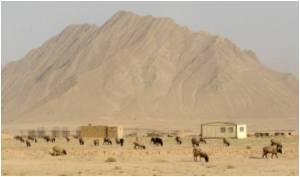
Each plant is placed in a plastic basket, which is weighed on electronic scales.
Labourers then prise apart the delicate lilac leaves, vivid red stigmas and pale yellow stamens -- a painstaking task that demands concentration and skill.
Saffron spice is prized around the world in cooking, in perfumes, as a fabric dye and as a treasured component of traditional medicine.
A few slithers of red saffron stigma also make a colourful and aromatic tea reputed to have near-magical healing qualities.
As such, saffron should be the perfect crop to boost Afghanistan's fragile economy and provide an alternative to the poppy harvest that produces illegal opium and funds Taliban insurgents.
Advertisement
In Herat, about 6,000 people -- 4,000 of them women -- are employed in saffron farming on 800 acres (325 hectares) of land, with the product exported to India, Europe, the United States and China.
Advertisement
Source-AFP















